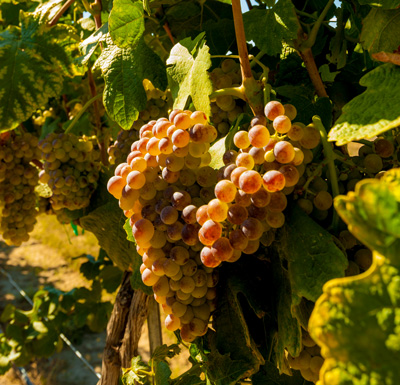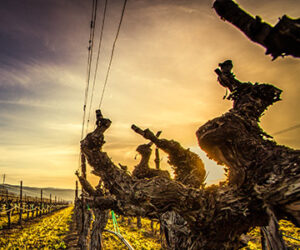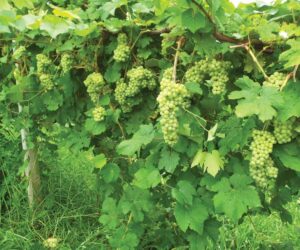I like to think that the idea of marriage is split among three classes of relationships in our society. First there is the “everything” kind of people. In my world, Polly and I are committed and have been together 31 years now . . . we are the “everything” kind of people. We are in our prime, compatible, and having a lot of fun. Next in my categorization is the “workable” type of folks. They are happy in their marriage, do well together, but relish time alone without their spouse. Finally is the group I like to call the “out-of-bounds” kind of relationships. They are just like the “everything” type, only in that it is the extreme opposite. Their marriage or long-term relationships just weren’t meant to be, there may be some rare instances where they’ve worked together, but most of the time it’s not a healthy relationship. They both should be looking for other, more healthy relationships.

At this point, you may be scratching your head wondering, “Chik, what does this have to do with grape varieties?” When blending, think of it as a marriage of usually two, but sometimes more, varieties of wine. The reality is that some varietal wines taste better in a blend. Some blends are “everything,” some are “workable,” and some I would classify in the “out of bounds” category. I hope you now see where I am going with this, because today I would like you to play matchmaker. Please meet Roussanne!
Roussanne Background
Roussanne is a white grape varietal. The berries are characterized by their reddish-brown color when ripe. Roux is the French word describing its color and the root of the variety’s name. It is one of the white grapes of the Rhône region of France. It keeps company with Viognier and Marsanne, the other white grapes of the region. In the northern Rhône, you will find it in the communes of Hermitage, Crozes-Hermitage, Saint-Joseph, and Saint-Péray. Elsewhere in France, it is permitted in Châteauneuf-du-Pape and Côtes du Rhône AOCs, Provence and surrounding areas, and Savoie to the east.
In the vineyard it is described as middle- to late-season ripening. It does well on well-exposed, calcareous-clay soils, not to mention if there are a bunch of rocks around, that can be a plus! If you have ever been there, this sounds like a perfect match for the northern Rhône and Savoie!
On the negative side it is highly susceptible to powdery mildew, Botrytis bunch rot, mites, and thrips. Boo-hiss, just another day in the vineyard! Some have referred to this varietal as the “princess of the vineyard,” given its high maintenance requirements. But, all grapes need some tender loving care, so they are all royalty to me.
Roussanne is known to produce some very high-quality and elegant wines as a varietal-specific wine. In its home range in France, it is more aromatic, tends to have higher acidity, and will age well. Elsewhere in the world, you will also find the variety in Italy, Portugal, Greece, the United States, Australia, and South Africa. To our surprise on a recent trip to the Texas Hill Country, we found some nice examples of Roussanne. The winemakers we talked to said, while it does well there, they must really watch it closely in the vineyard. When grown in warmer climates, you have to be careful and harvest before the potential alcohol reaches 14%. High-alcohol Roussanne wines lack flavor and come across as bitter.
In The Vineyard
Under the right vineyard conditions, it will give you all of the elegance and quality needed for a 100% varietal wine. An example of this is in Savoie, in southeast France, where the village of Chignin produces Chignin-Bergeron (Bergeron being the local name for the Roussanne grape). The grapes here are grown on rocky southwest facing slopes, giving them ample sunlight throughout the growing season. These rocky soils absorb the heat during the day and radiate it back to the vine at night. Tradition and local rules have brought about this style of Roussanne wines.
Thinking outside the box of the traditional fighting varietals — Chardonnay, Cabernet Sauvignon, Pinot Noir, and now to a lesser extent, Merlot — the people of the Texas Hill Country and the High Plains are doing their homework on other varieties and Roussanne is among them. The rocky soils of the hills and the red sands of the plains combined with the later bud break are a plus. The later ripening and Texas temperature extremes make it something to watch out for to keep alcohols lower and acidities high. Statistics from 2017 show Texas producing 230 tons (210 tonnes) of Roussanne over 47 acres (19 ha).
Roussanne is known to produce some very high-quality and elegant wines as a varietal-specific wine.
More commonly known is that Roussanne is often blended with Marsanne. One source I found described Marsanne as one of those grapes that the wines taste great in their first year, but then not again until after ten years. Quite subjective but it brings to light the marriage concept. Marsanne is more productive and less susceptible to fungal diseases. This relationship between Roussanne and Marsanne is a classic case of making wines taste great by blending them. Every winemaker faces this conundrum — in this case, Roussanne and Marsanne get married in the end to make them better. It’s not a marriage of convenience, rather, a marriage that works for several reasons. In the Northern Rhône, Roussanne and Marsanne are in one of those “workable” relationships. In the marriage of Marsanne and Roussanne, Roussanne is the grape that adds some vibrancy to the blend.
Certainly, deserving its chance to be the best wine out there, Marsanne is a dominant force in the winemaking of the Rhône because of its highly productive nature. Could the Marsanne be as noble as Roussanne? The answer is yes, under the right vineyard conditions. With Viognier, probably the same argument exists as with Marsanne. In my work with white Rhône varieties here in California, I know first-hand of this phenomenon. The Marsanne fruit I have worked with has tended to be over-cropped. I sought to blend the Marsanne with both Roussanne and Viognier. Understandably, this is a grower’s decision on how to ultimately balance a vineyard, but when you have a variety that is known to overcrop, measures can be taken early in the vineyard’s life to balance the crop load, if you want to make that “workable,” blend. I am sure “Backyard Vines” columnist Wes Hagen has already primed you on that principle . . . but if you want to dig in deeper on this topic, check out his “Balance In The Vineyard” column in the April-May 2017 issue of WineMaker or at https://winemakermag.com/article/balance-in-the-vineyard.
In the Winery
Winemaking with Roussanne can follow several courses. Less to my desire are the high-alcohol, low-acidity versions that come about by too long of hang time in warm regions. The styles that I prefer are those lower-alcohol (~12–13%), high-acid (~7 g/L) styles reminiscent of the French styles but certainly possible here in North America. This may require some acidulation with tartaric acid and some pre-fermentation watering back if the fruit comes in at too high of sugar. To prevent this, work with your fruit supplier and let them know your desires. Once in the cellar, if possible, express the juice with whole-cluster pressing. Alternatively, de-stem and crush just what your press can accommodate. Keep the free-run separate from the hard sqeezin’s. Adjust your acid if necessary, the hard press will certainly need some adjustment, and ferment with an aromatic yeast of your choice. My choices have been Lalvin’s CY3079 if I want a little sweetness in the finish, or QA23 for a dry, crisp wine. Both of these yeasts have high nitrogen requirements so be sure to stay on top of that. You might also consider fermenting the hard press juice on oak staves that can then be blended back later. Preserve the acidity at the end of primary fermentation by inhibiting the malolactic conversion. Although if the acidity is too high, then this can serve as a softening step with some flavor enhancement. Again, the winemaking path can take several turns, so use this as a guideline.
Following guidelines and tasting often will lead the winemaker to a final decision on what exactly goes into the bottle. I always consider this to be a challenge, with bench trials and experience as my tools. This is nothing that you can’t overcome in your winery. Taste your wines individually and, like you were on date, list their attributes, both positive and negative. In most cases, you are probably dealing with the “everything” or “workable” wine groups. Do some trials, based on synergy of what each variety will add. Hopefully your Roussanne is the crowd pleaser and you have enough on its own to bottle it as a 100% varietal, but don’t despair if that is not the case. “Workable” varieties are the flexible ones, happy on their own or partnered in marriage, this could be with its traditional blending partners or something else. But above all, try your best to avoid the “out-of-bounds” blends, because once it’s in the bottle, divorce is not possible.
Roussanne recipe Yield 5 gallons (19 L)
Ingredients
100 lbs. (45 kg) Roussanne fruit — or 6 gallons (23 L) commercially available juice (clarified). It is best to source the juice locally.
Distilled water
10% potassium metabisulfite (KMBS) solution (weigh 10 grams of KMBS, dissolve into about 75 mL of distilled water. When completely dissolved, make up to 100 mL total with distilled water.)
5 g Lalvin QA23 yeast or Lalvin CY3079 (Red Star Premier Cuvee can also be used as a substitute)
5 g Fermaid K (or equivalent yeast nutrient)
5 g Di-ammonium phosphate (DAP)
Other equipment or needs specific to this recipe
5-gallon (19-L) carboy
6-gallon (23-L) carboy
6-gallon (23-L) plastic bucket
Airlock/stopper
Racking hoses
Crush equipment, destemmer/crusher (if using fruit)
Wine press (if using fruit)
Inert gas (nitrogen, argon, or carbon dioxide will do)
Refrigerator (~45 °F/7 °C) to cold settle the juice. (Remove the shelves so that the bucket will fit.)
Ability to maintain a fermentation temperature of 55 °F (13 °C) TIP: Use a 33-gallon (125-L) plastic can as a water bath. Place ice blocks in the water to maintain a relatively constant temperature. This will be your refrigeration system for peak fermentation. If you have other means to keep things cool, of course use that. Also, you may have a need to keep it warm, in this case wrapping the bucket/carboy with an electric carboy wrap (available at most home winemaking outlets) works well.
Thermometer capable of measuring between 40–110 °F (4–43 °C) in one degree increments
Pipettes with the ability to add in
increments of 1 mL
Ability to test or have testing performed for sulfur dioxide
Step by Step
- Crush and press the grapes. Do not delay between crushing and pressing. Move the must directly to the press and press lightly to avoid extended contact with the skins and seeds. If you choose to press more firmly, keep your press fractions separate (See article text).
- Transfer the juice to a 6-gallon (23-L) bucket. During the transfer, add 16 mL of 10% KMBS solution (This addition is the equivalent of 40 mg/L or ppm SO2). Move the juice to the refrigerator.
- Let the juice settle at least overnight. Layer the headspace with inert gas and keep covered.
- Measure the Brix.
- Adjust the acidity to 6–7 g/L.
- When sufficiently settled, rack the juice off of the solids into the 6-gallon carboy.
- Prepare yeast. Heat about 50 mL distilled water to 108 °F (42 °C). Measure the temperature. Pitch the yeast when the suspension is 104 °F (40 °C). Sprinkle the yeast on the surface and gently mix so that no clumps exist. Let sit for 15 minutes undisturbed. Measure the temperature of the yeast suspension. Measure the temperature of the juice. You do not want to add the yeast to your cool juice if the temperature of the yeast and the must temperature difference exceeds 15 °F (8 °C). To avoid temperature shock, acclimate your yeast by taking about 10 mL of the juice and adding it to the yeast suspension. Wait 15 minutes and measure the temperature again. Do this until you are within the specified temperature range. Do not let the yeast sit in the original water suspension for longer than 20 minutes. When the yeast is ready, add it to the fermenter.
- Add Fermaid K (yeast nutrient).
- Initiate the fermentation at room temperature ~(65–68 °F/18–20 °C) and once fermentation is noticed (~24 hours), move to a location where the temperature can be maintained at 55 °F (13 °C).
- Two days after fermentation starts, dissolve the DAP in as little distilled water required as to completely go into solution (usually ~ 20 mL). Add directly to the carboy.
- Normally you would monitor the progress of the fermentation by measuring brix. One of the biggest problems with making white wine at home is maintaining a clean fermentation. Entering the carboy to measure the sugar is a prime way to infect the fermentation with undesirable microbes. So at this point, the presence of noticeable fermentation is good enough. If your airlock becomes dirty by foaming over, remove it and clean it and replace as quickly and cleanly as possible. Sanitize anything that will come in contact with the juice.
- Leave alone until bubbles in the airlock are about one bubble per minute. Usually about two to three weeks, then starting measuring the Brix every 2–3 days. If the bubbles are slower, then measure every day.
- The wine is considered dry, or nearly dry when the Brix reaches -1.5 Brix or less. Taste the wine. If it tastes dry, it probably is.
- Add 3 mL of fresh KMBS (10%) solution per gallon (3.8 L) of wine. This is the equivalent to ~40 ppm addition. Transfer the wine to the 5-gallon (19-L) carboy and lower the temperature to 38–40 °F (3–4 °C).
- After two weeks, test for pH and SO2. Your target SO2 is 35 mg/L. (There is a simple SO2 calculator at www.winemakermag.com/sulfitecalculator). Check the SO2 in another two weeks, prior to the next racking, and adjust while racking. HINT: Rack to another sanitized 5-gallon (19-L) carboy, or your bucket. In the case of the latter, rinse and clean the original carboy and transfer the wine back to it. This is done at about 4–6 weeks after the first SO2 addition. Once the free SO2 is adjusted, maintain at the target level by monitoring every 3–4 weeks.
- Consult our search engine for tips on fining and filtration.
- At about three months you are ready to bottle. Be sure to maintain sanitary conditions while bottling. Once bottled, you’ll need to periodically check your work by opening a bottle to enjoy with friends.






